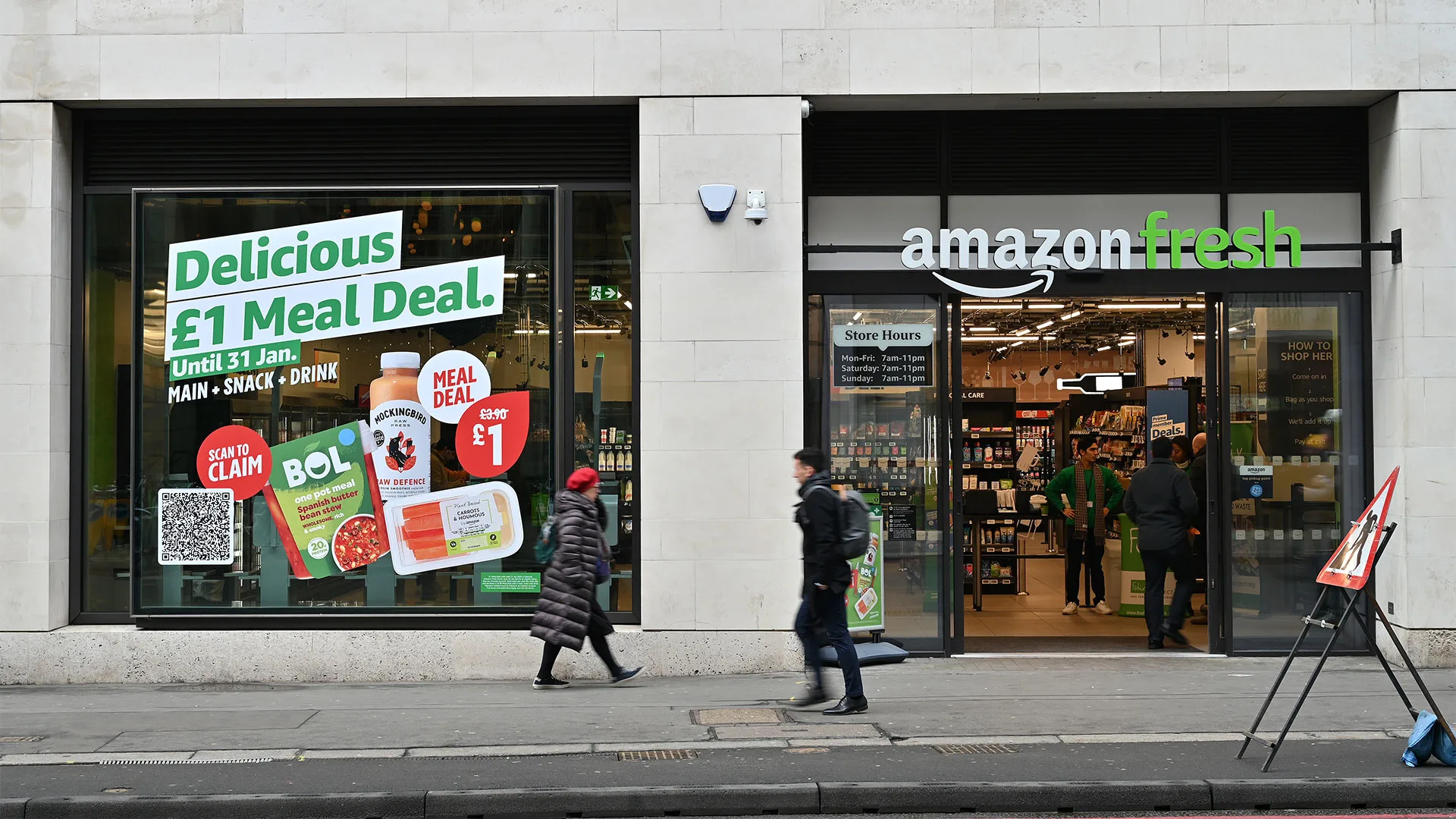
If you’re a fan of Amazon Fresh, the e-commerce giant’s chain of cashier-less of grocery stores, 2025 is turning out to be a pretty rough year for you—and the brand.
After closing some Amazon Fresh locations in the United States earlier this year, Amazon announced that it expects to close all Amazon Fresh locations in the United Kingdom. Here’s what you need to know about the Amazon Fresh closures.
Amazon moves to close UK grocery stores
Today, Amazon abruptly announced that it launched “a consultation with employees” for the proposed closure of all Amazon Fresh locations in the United Kingdom. (UK laws require consultation periods in cases of large layoffs.) The company currently has 19 UK Amazon Fresh stores.
In a blog post, Amazon states that the proposed closures are the result of an evaluation of its business operations, as well as “the very substantial growth opportunities in online delivery.”
Subscribe to the Daily newsletter.Fast Company’s trending stories delivered to you every day
Privacy Policy
|
Fast Company Newsletters
However, the post doesn’t make clear if the move is definite. Rather, the company states: “In case of closure [emphasis added], our goal is to offer redeployment opportunities to as many affected employees as possible.”
The company continues, “As part of the Fresh Stores closure proposal, in addition to expanding online grocery services, we’re also proposing to convert five Amazon Fresh locations to Whole Foods Market.”
Fast Company has reached out to Amazon for clarification on whether the decision to close the stores has been made.
Under the proposed closure, 14 Amazon Fresh stores in the UK would cease to operate entirely, and the remaining five Amazon Fresh stores would be rebranded and turned into Whole Foods stores, the U.S. grocery chain that Amazon bought back in 2017.
It should be noted that whether or not all Amazon Fresh stores close in the UK, the company will still operate its Amazon Fresh grocery delivery service in the country.
Proposed UK closures follow U.S. store shutterings
The closure of Amazon Fresh stores in the UK won’t be the first locations to close in 2025. The majority of Amazon Fresh stores operate inside the United States, and this year, Amazon has closed at least three U.S. locations.
In March, GroceryDive reported that Amazon was in the process of shuttering two Fresh stores. The Amazon Fresh store in Manassas, Virginia, closed on March 16, and the Thousand Oaks, California, store closed on April 27.
“We remain committed to Amazon Fresh and our broader grocery strategy, and will continue to refine our portfolio of stores as we learn which locations and features resonate most with customers,” an Amazon spokesperson told the publication at the time of the report.
Then, in June, GeekWire reported that Amazon closed its Amazon Fresh location in Federal Way, Washington.
advertisement
“Certain store locations work better than others, and after an assessment of our offering we’ve decided to close our Amazon Fresh store in Federal Way,” an Amazon spokesperson said at the time.
Amazon still has more than 60 U.S. locations
Despite the earlier U.S. closures, the company still has more than 60 locations within the United States.
Amazon Fresh’s store locator tool shows that the company currently operates 64 grocery stores across nine states, with California having the most stores by far:
California (27)
Illinois (10)
Maryland (5)
New Jersey (4)
New York (3)
Pennsylvania (6)
Virginia (5)
Washington (3)
Tennessee (1)
After announcing the proposed closure of all of its Amazon Fresh UK locations, Amazon’s stock (Nasdaq: AMZN) is currently down about 2.2% in morning trading.
However, the extent to which the proposed closures are related to Amazon’s stock price drop is debatable. As of the time of this writing, many Big Tech stocks are currently flat or trading down slightly for the day.
Besides Amazon’s 64 Fresh locations, the company currently operates more than 500 Whole Foods Markets locations around the world.
Amazon’s move comes as brick-and-mortar retailers on both sides of the Atlantic are struggling with headwinds from rising operating costs, more price-conscious consumers, tariff uncertainty, and other factors.
In January, the Guardian reported that the UK lost 13,500 shops in 2024, a 28% increase over the year before.



